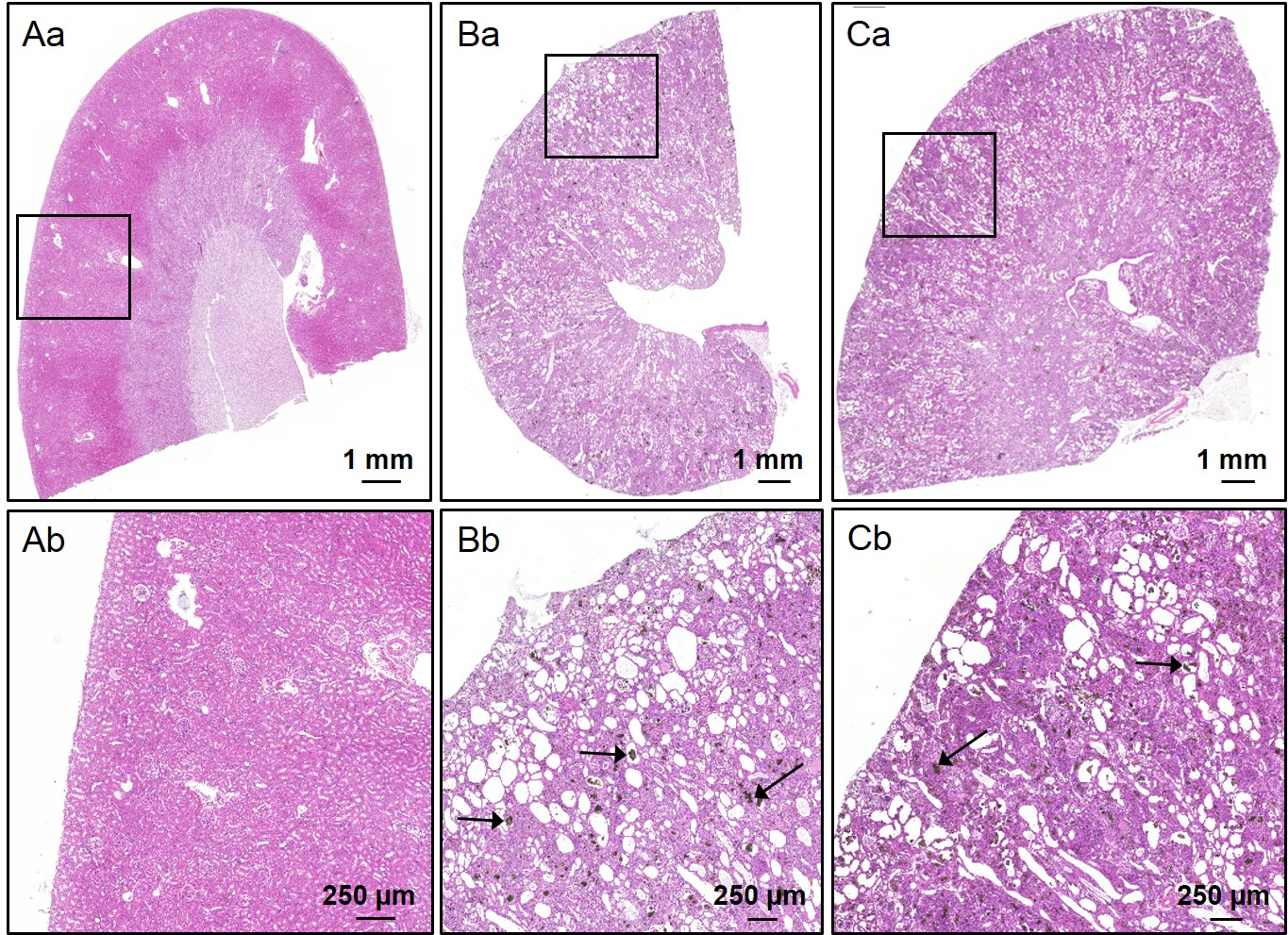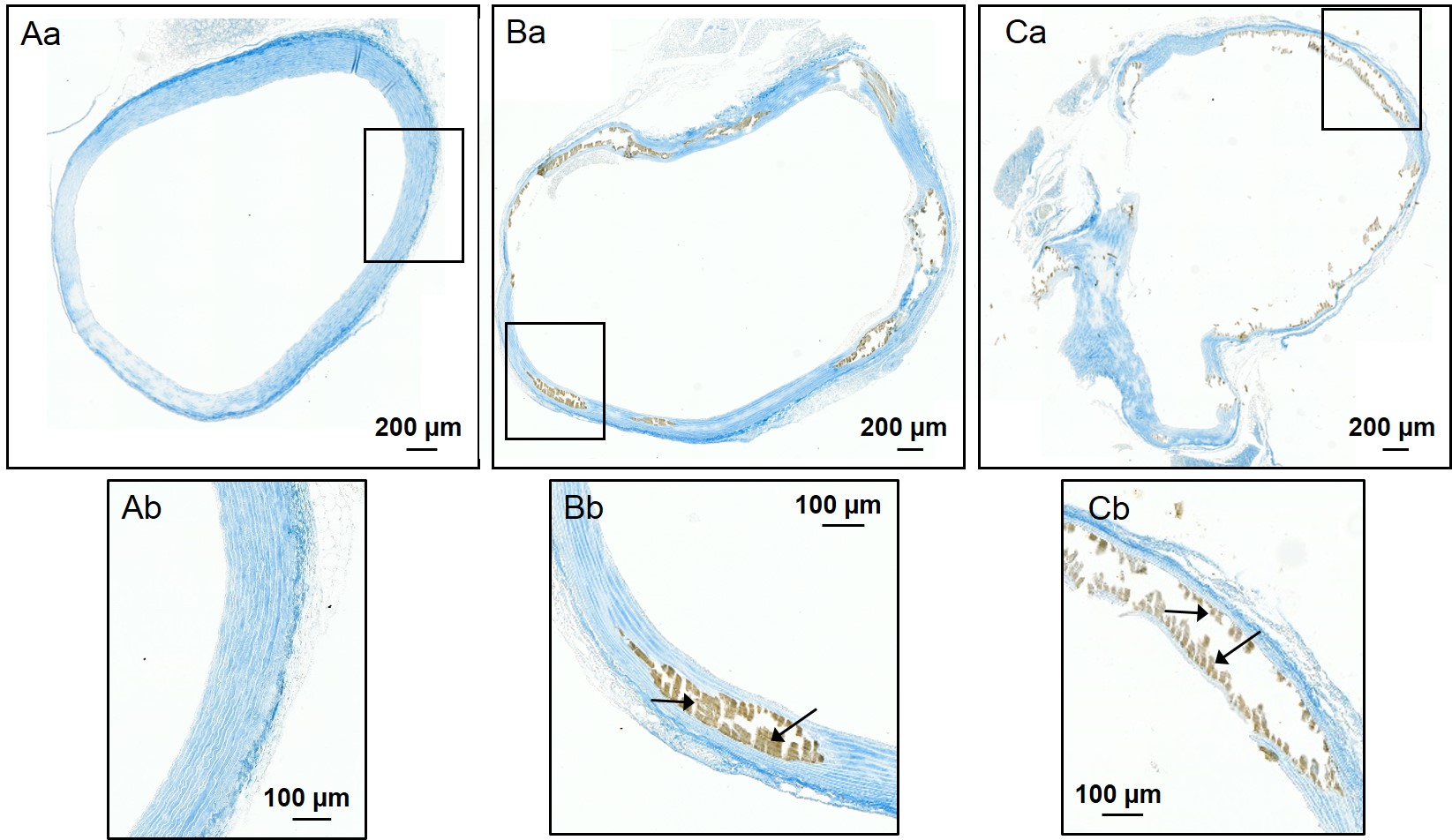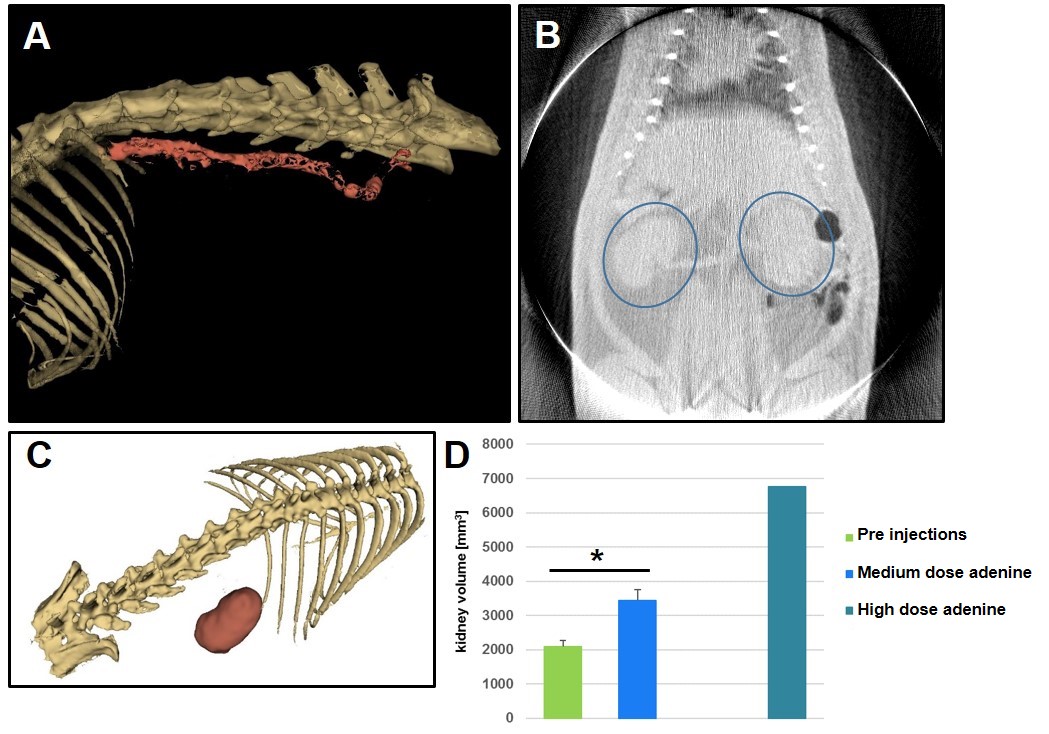Species
Rat
Fields of application
Chronic kidney disease (CKD) is progressive loss in kidney function over a period of months or years. CKD is a worldwide health problem that might lead to end-stage renal disease.
Adenine models of chronic kidney disease are relatively easy to perform and generate clinically relevant outcomes. Unlike surgical models they have high survival rates. One can distinguish between the adenine diet models for which an adenine diet is fed for several weeks and the adenine systemic injection model. The adenine injection model has two big advantages. (I) The experimenter has the complete control over the adenine dose administered. This makes the model highly reproducible and (II) the weight loss which is remarkable in the adenine diet model is almost absent. Thus, the adenine i.p. injection model is also the gentlest for the animals.
The adenine i.p. CKD model is associated with significant changes in the following parameters: marked structure changes of kidneys, increased plasma phosphate and creatinine, a decrease in plasma calcium, in creatinine, phosphate in urine, in creatinine clearance, and a decrease of around 6 % in body weight.
- Pharmacodynamics and pharmacokinetics
- (Patho)physiological processes
- Therapeutic efficacy
- Proof of concept
Endpoints / outcome parameter
- Score (severity of clinical symptoms; in vivo)
- Clinical chemistry of full blood and urine (in vivo, diverse parameters, e.g. phosphate, urea, creatinine, creatinine clearance)
- Hemogram
- Blood pressure (in vivo)
- Kidney enlargement (in vivo (CT); post mortem)
- Aorta calcification (in vivo (CT); post mortem)
- Pathophysiological changes in kidneys (post mortem)
Readout parameter
- Scoring
- Clinical chemistry
- Metabolic cages
- Blood pressure measurements (non-invasive)
- Computer tomography (CT)
- Histology (various classical histological stains)
- Immunohistochemistry
Quality management and validation
- Controls
- Blinded induction
- Blinded data collection and analysis
- Randomisation
- Allocation concealment
- Biometric expertise
- Internal quality management
References
Leichsenring A, Eichentopf R, Grunwald T, Friedrich D, Leibrock C, Lange F. Refinement of the adenine model for chronic kidney disease in rats. Laboratory Animals 2019; 53(1S): 28-203


